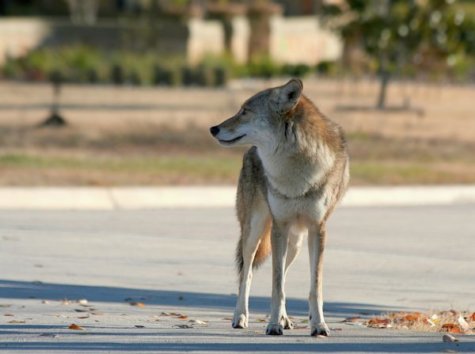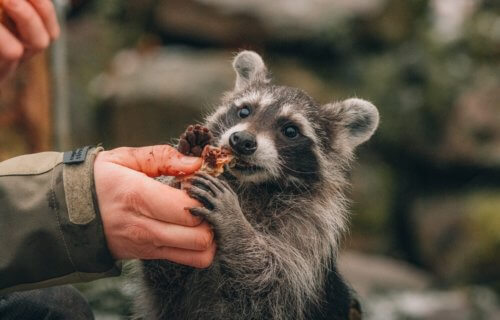GAINESVILLE, Fla. — Growing cities have been blamed for years for the downfall of local wildlife populations all over the world. As urbanization replaces trees and ponds with streets and homes, many animals lose their natural habitats and end up running through local neighborhoods. Although scientists have long believed that this process ends up making animals smaller, a new study finds it’s actually leading to larger and more hefty critters roaming through your trash.
A team from the Florida Museum of Natural History says city-dwelling mammals are getting bigger and fatter thanks to having more food around in areas packed with humans. Researchers examined the body length and weight of more than 140,000 animals from over 100 North American species over the last 80 years. The results find animals which often pop up in cities, such as wolves, bobcats, deer, bats, shrews, and rodents, are growing more than their rural relatives.
Their findings are actually the exact opposite of what scientists have assumed about what city life is doing to mammals. The old hypothesis, called the urban heat island effect, suspected that buildings and roads emit more heat than green spaces. This, in theory, would cause higher temperatures and animals living in these conditions are typically smaller — according to the biological principle called Bergmann’s Rule.
“In theory, animals in cities should be getting smaller because of these heat island effects, but we didn’t find evidence for this happening in mammals,” says study lead author Maggie Hantak in a university release. “This paper is a good argument for why we can’t assume Bergmann’s Rule or climate alone is important in determining the size of animals.”
Urbanization is about more than just climate change

Hantak’s team created a model that examines how the climate and growing populations influence the size of local animals in urban areas. As temperatures dropped, researchers found that mammals did get bigger, syncing up with Bergmann’s Rule. However, the trend was actually stronger in cities with more people.
Moreover, the team discovered that city-dwelling animals grew larger regardless of the local temperature. Those findings are leading researchers to suspect that other factors of urbanization play a bigger role than climate change.
“That wasn’t what we expected to find at all,” explains Robert Guralnick, the Florida Museum curator of biodiversity informatics. “But urbanization represents this new disturbance of the natural landscape that didn’t exist thousands of years ago. It’s important to recognize that it’s having a huge impact.”
Over the last decade, scientists have been sounding the alarm that global warming is shrinking the prey that mammals eat in the wild — leading to smaller animals. Scientists have also cautioned that smaller animals may mean smaller or fewer offspring.
“When we think about what’s going to happen to mammalian body size over the next 100 years, a lot of people frame that as global warming causing animals to get smaller,” Guralnick adds. “What if that isn’t the biggest effect? What if it’s that urbanization is going to lead to fatter mammals?”
Some animals adapt to city life better than others
Hantak notes that not all mammals thrive in this changing landscape. In fact, the study finds animals who hibernate or slow their metabolism in the winter (torpor) shrink more as urbanization raises local temperatures.
“We thought species that use torpor or hibernation would be able to hide from the effects of unfavorable temperatures, but it seems they’re actually more sensitive,” Hantak says.
In terms of food, one man’s trash is another raccoon’s treasure. Study authors say the abundance of food, water, and shelter in the “concrete jungle” all factor in to fattening up local critters. Additionally, cities tend to lack the normal predators that would eat animals like rodents.
“Animals that like living in urban environments could have a selective advantage while other species may lose out because of the continued fragmentation of landscapes,” Guralnick notes. “This is relevant to how we think about managing suburban and urban areas and our wildlands in 100 years.”
Despite these advantages, Hantak says bigger isn’t always better when it comes to the actual diet and health of these mammals.
“When you change size, it could change your whole lifestyle,” the study author concludes.
The study appears in the journal Communications Biology.
